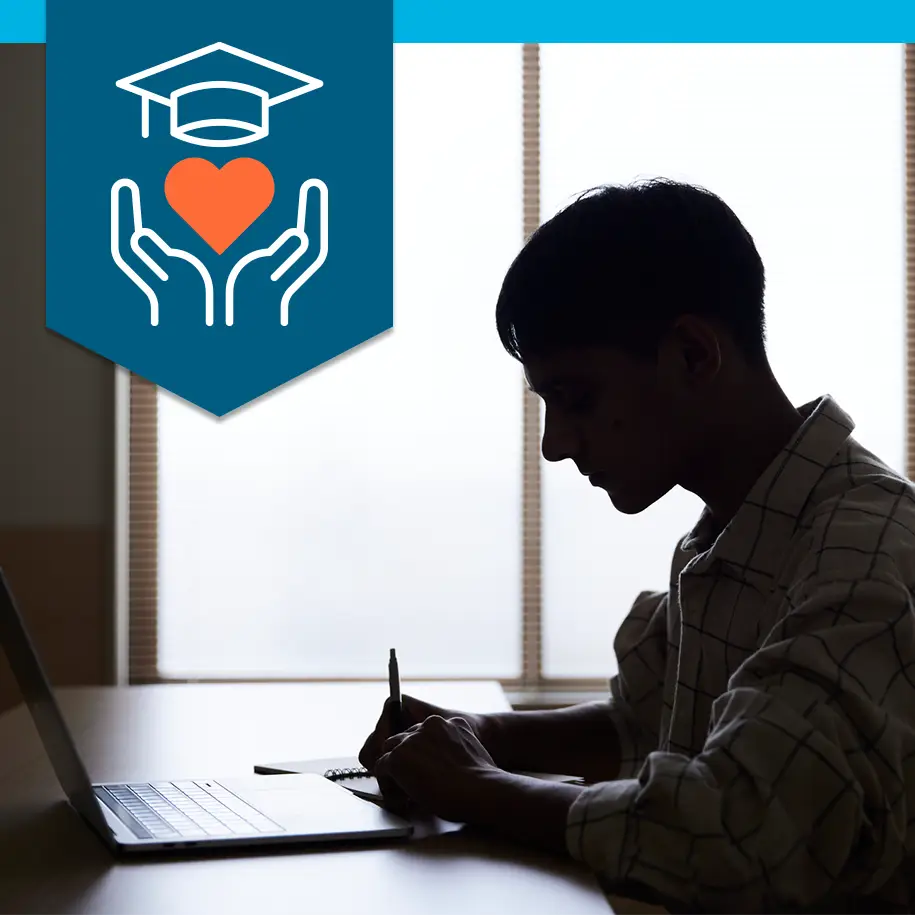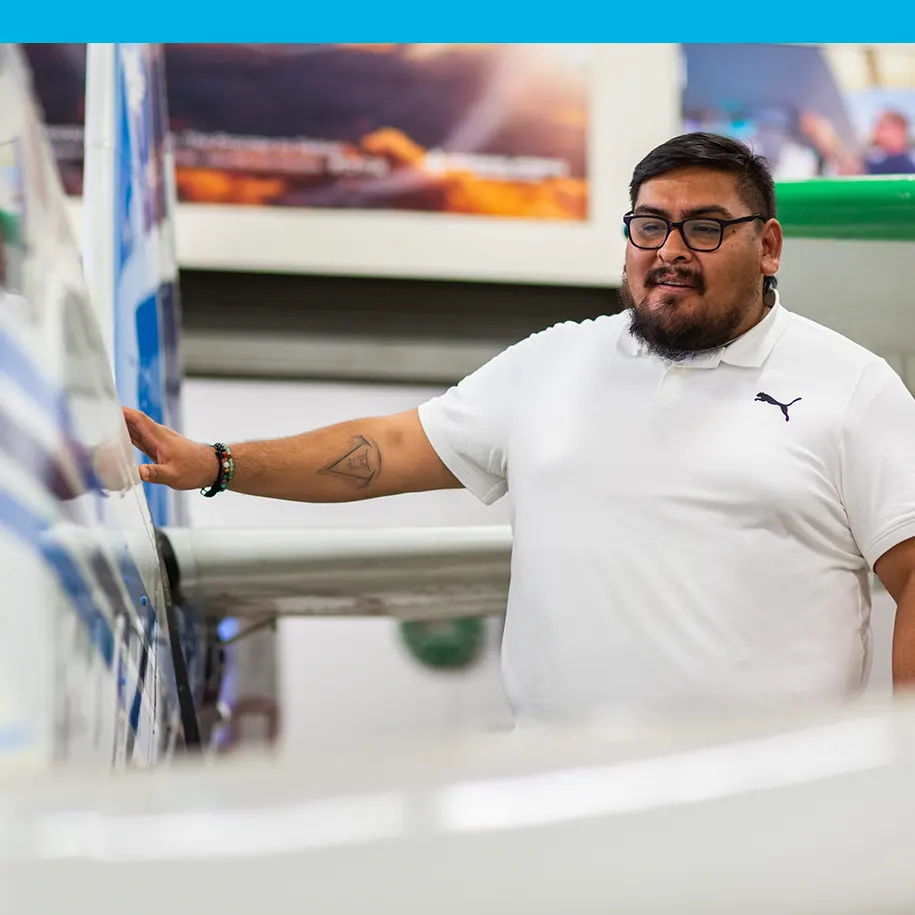
What “human at the helm” of AI actually means for higher education
From time to time, we tap into the expertise of our InsideTrack team and ask them to share insights on a student support topic they’re passionate about. This week, we turn our blog over to Vice President of Solutions Meaghan Joyce to share her perspective on what it means to lead with human-centered design as higher education continues to embrace AI technology.
Balancing AI technology with human-centered support
Students are embracing generative AI at a staggering pace, with one recent survey finding that 65 percent of students now engage with the technology weekly. And yet, when it comes to getting support, the same survey found they still overwhelmingly prefer help from a human.
As more institutions explore and adopt AI tools to drive student success, the phrase “human at the helm” is quickly becoming part of the common vernacular. The growing consensus is that, for AI to be effective in higher education, it has to be designed around — not in place of — human connection.
But translating those values into practice is another matter. Higher education will need to move beyond platitudes and buzzwords and dig deep into questions about how AI is integrated into the college experience. AI should be treated not as a technical upgrade, but as a design challenge rooted in human needs and relationships.
What it means to keep humans at the helm
The concept isn’t new. In the 1940s, cybernetics trailblazer Norbert Wiener popularized the idea of “human in the loop,” emphasizing that humans should remain active control elements in military and aerospace systems.
A radar system, for instance, might be automated, but a human operator was still responsible for interpreting signals and guiding decisions. Decades later, that principle became foundational in early machine learning. With generative AI, a similar idea holds.
As Paula Goldman, chief ethical and humane use officer at Salesforce, wrote last year, the goal isn’t to have humans intervene in every individual AI interaction but to allow them to focus on the high-judgment decisions that most deserve their attention. “In other words,” she explained, “humans aren’t always rowing the boat — but we’re very much steering the ship.”
The power of co-creation in AI tool design
The greatest opportunity for AI in higher education lies in enhancing the capacity of individuals. That doesn’t mean squeezing more output from fewer people. It means giving faculty, advisors, coaches and staff the time and tools to do the work that only they can do.
That could mean developing an AI assistant that helps students navigate degree mapping and course registration, freeing advisors to focus on the more complex academic and personal challenges students face. Or it might involve creating a chatbot that answers routine questions after hours while flagging nuanced concerns for human follow-up the next day.
It’s also worth asking: Which humans are at the helm?
A top-down approach, where administrators and IT teams design tools and simply hand them off to students and faculty, isn’t going to work. Institutions need clear use cases, shared guardrails and strong change management strategies to ensure that everyone involved feels equipped, informed and supported at every step.
Faculty, coaches, advisors and students themselves should play a central role in shaping how AI tools are introduced and used. Some students will see AI as an accessible and efficient support option. Others may be wary of automated systems that feel impersonal or opaque. Having a human at the helm means knowing when not to use AI as much as it means knowing when to use it.
Leveraging AI for rote tasks — and humans for deep relationship-building
At InsideTrack, as we began integrating AI into our student coaching model, we decided that any task involving direct communication with students — especially in emotionally sensitive or high-stakes situations — would be prioritized for human intervention.
No chatbot can build trust with a first-generation student juggling a full-time job while trying to stay enrolled. No algorithm can fully grasp the nuance behind a missed appointment or a student’s silence. In those moments, it’s a coach’s ability to listen, interpret and respond with empathy that makes all the difference.
Instead, we’ve focused on using generative AI to enhance, not replace, coaching interactions.
In partnership with Salesforce, we’re building support tools that streamline energy-consuming administrative tasks and empower coaches to spend more time building relationships and providing meaningful support. These tools will summarize coaching meeting notes, analyze notes for key themes, and ultimately recommend and help facilitate next steps for the coach based on the student conversation. These features don’t replace a coach’s insight — they enhance it. By cutting down on administrative busywork, coaches can devote more energy to what they do best: guiding students toward their goals.
Many leaders across higher education share this philosophy, including Daren Coudriet, executive director of innovation and Nittany AI alliance at Penn State University, who notes: “As we integrate AI across higher education, our foremost priority should be to build systems that automate the routine and repetitive, freeing up faculty and staff to engage in the nuanced, empathetic and creative work that only humans can do best. The true power of AI isn’t in replacing people, but in unlocking their capacity to focus on uniquely human contributions like coaching, mentoring and building authentic relationships that drive student success.”
These aren’t decisions to be made on the fly or patched in after the fact. They should underpin every step of design, development and implementation of AI.
A human-centered approach to AI shouldn’t be the destination. It’s the process itself. It’s a discipline that calls for resisting the urge to automate complexity and instead design systems that strengthen human insight, agency and judgment.
“Human at the helm” remains a valuable north star. But it only provides real direction if we treat it as a core design principle, not a catchy slogan.

Meaghan Joyce is the VP of Solutions at InsideTrack, a national nonprofit dedicated to advancing individuals toward their career and educational goals through coaching.
InsideTrack Coaching is at the intersection of human-powered and tech-enabled. Learn more about how our evidence-based approach helps students — and institutions — reach their goals.
Coaching solutions proven to advance all learners
Whether you’re looking to help students persist through completion or to improve career outcomes for job seekers and employees, our holistic coaching solutions can help you achieve meaningful outcomes.



